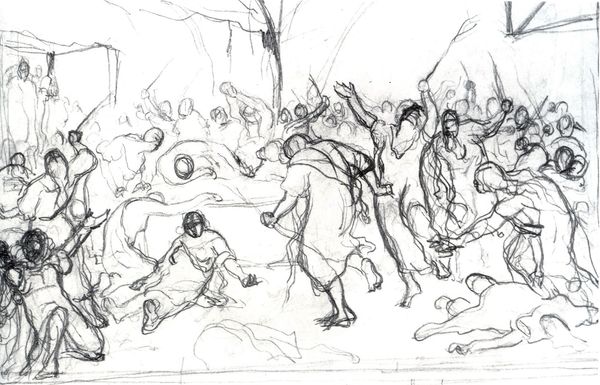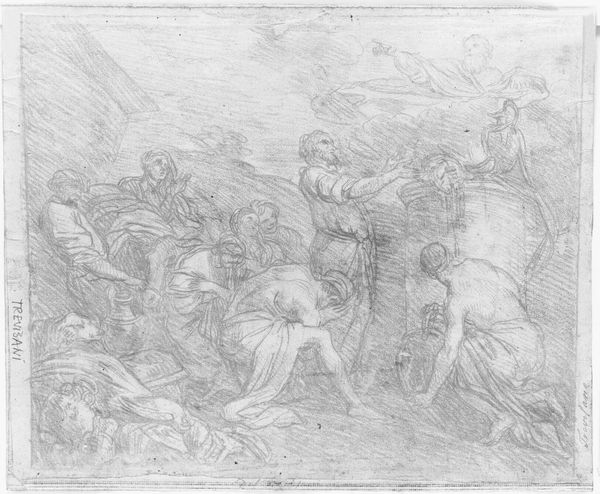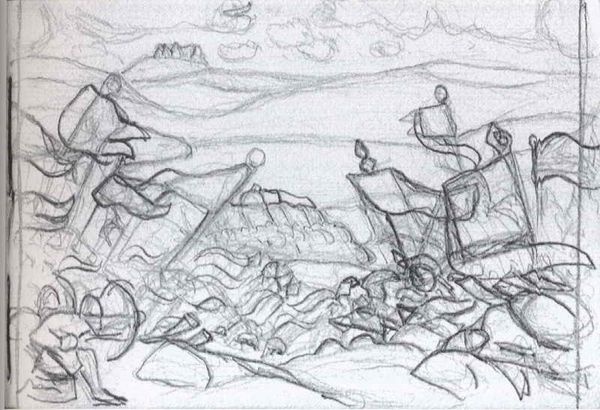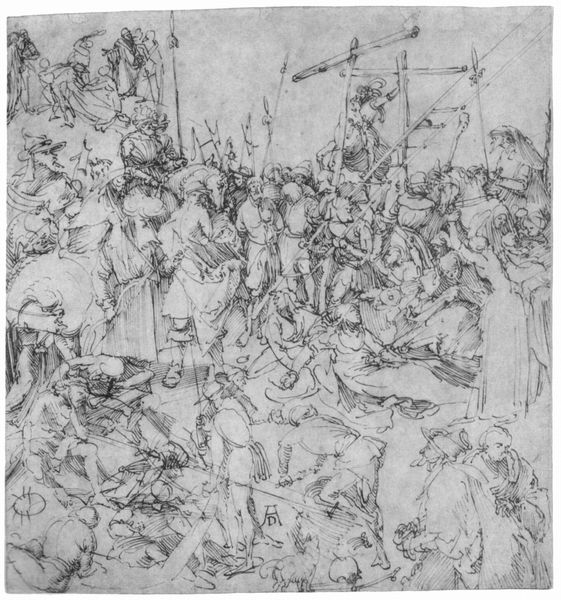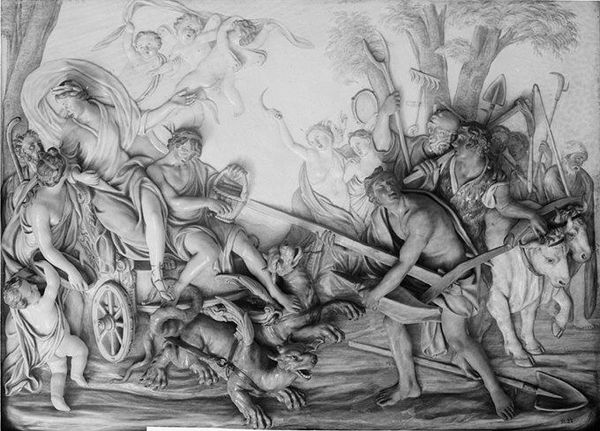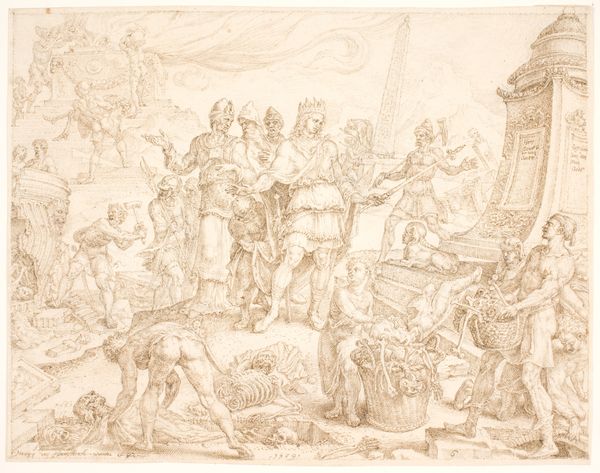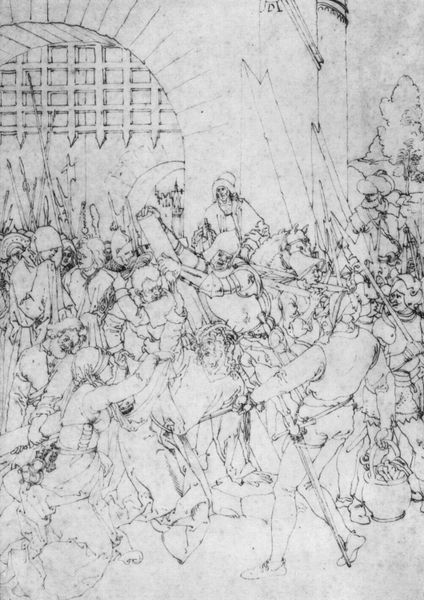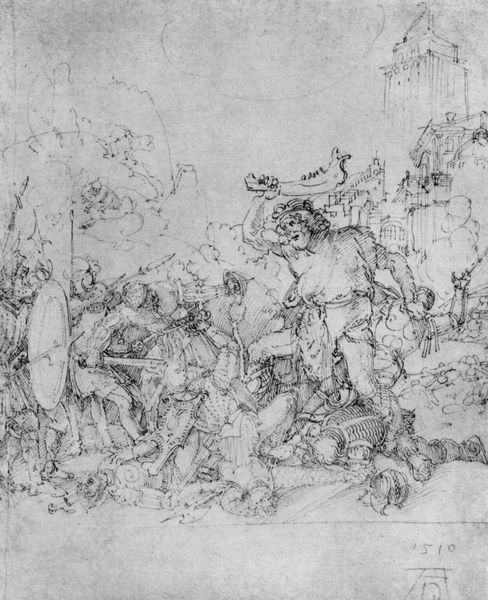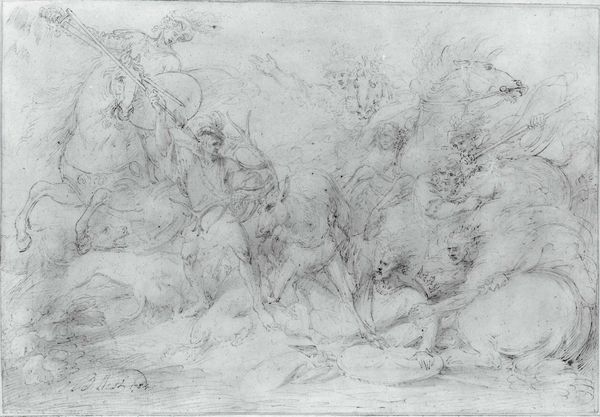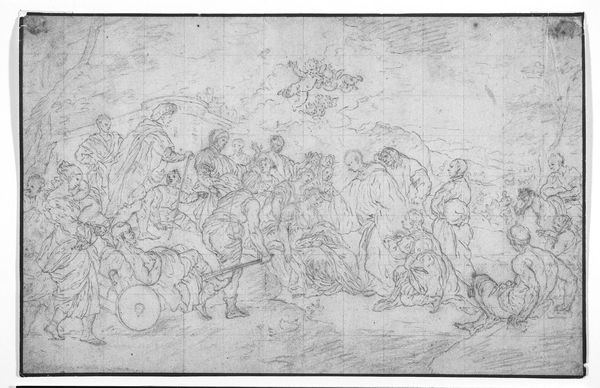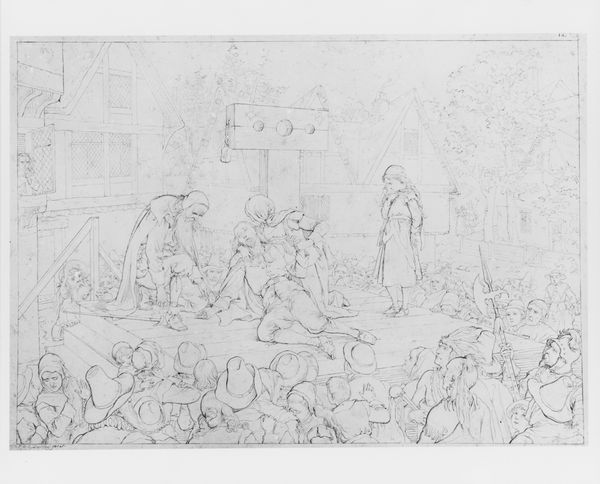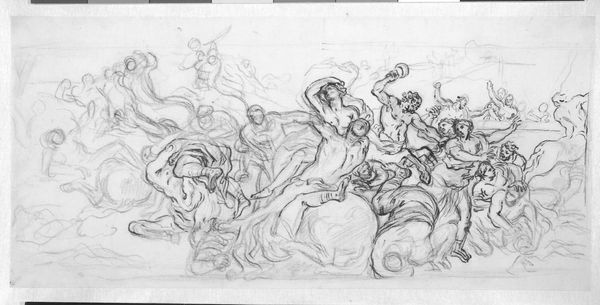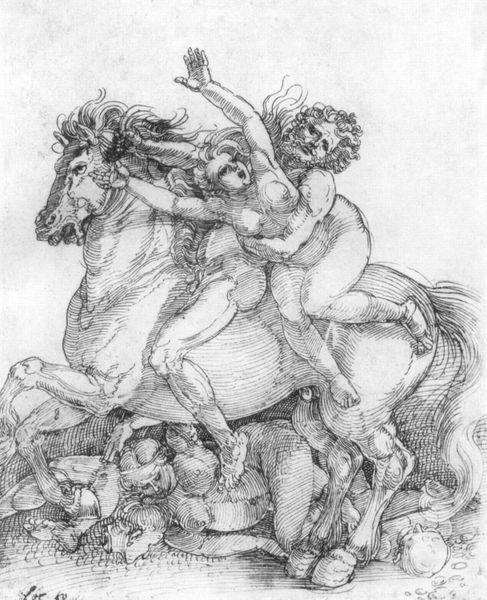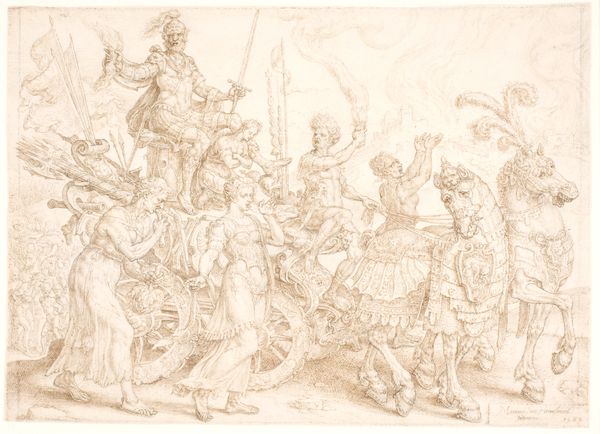
The Midianites surprised and destroyed by Gideon's Army 1559 - 1562
0:00
0:00
drawing, engraving
#
drawing
#
figuration
#
line
#
history-painting
#
northern-renaissance
#
engraving
Dimensions: 200 mm (height) x 252 mm (width) (bladmaal)
Editor: Here we have "The Midianites Surprised and Destroyed by Gideon's Army," an engraving by Maarten van Heemskerck, dating from the late 1550s or early 1560s. What immediately strikes me is the incredible detail rendered with simple lines; it feels both chaotic and meticulously planned. What's your perspective on this piece? Curator: Looking at the print, it's important to consider the process of its creation and its context as a mode of distribution. Engravings allowed for the mass production of images. Van Heemskerck wasn't just creating a single object; he was creating a matrix for reproduction. What effect might the availability of printed images like this have on popular understanding of biblical narratives and warfare at the time? Editor: That's fascinating – it's not just about the image itself but also about the mechanics of making and sharing it. Were these engravings accessible to a broad audience? Curator: Precisely. Consider the materiality – the copperplate, the ink, the paper – and the labour involved in producing each impression. While not everyone could afford original paintings, engravings offered a more accessible form of art consumption. This democratization of imagery raises questions about power dynamics and control over information in the 16th century. Think about how different social classes might engage with imagery like this, not just religiously, but politically too. Editor: So, it’s about accessibility and how printed images shape society's understanding of events and narratives, more than simply illustrating a story. I’ve never considered that perspective. Thanks! Curator: And that consideration sheds light on our own consumption and distribution of images today. What are the means by which we create and share visual narratives, and what socio-political influences underpin them?
Comments
No comments
Be the first to comment and join the conversation on the ultimate creative platform.
